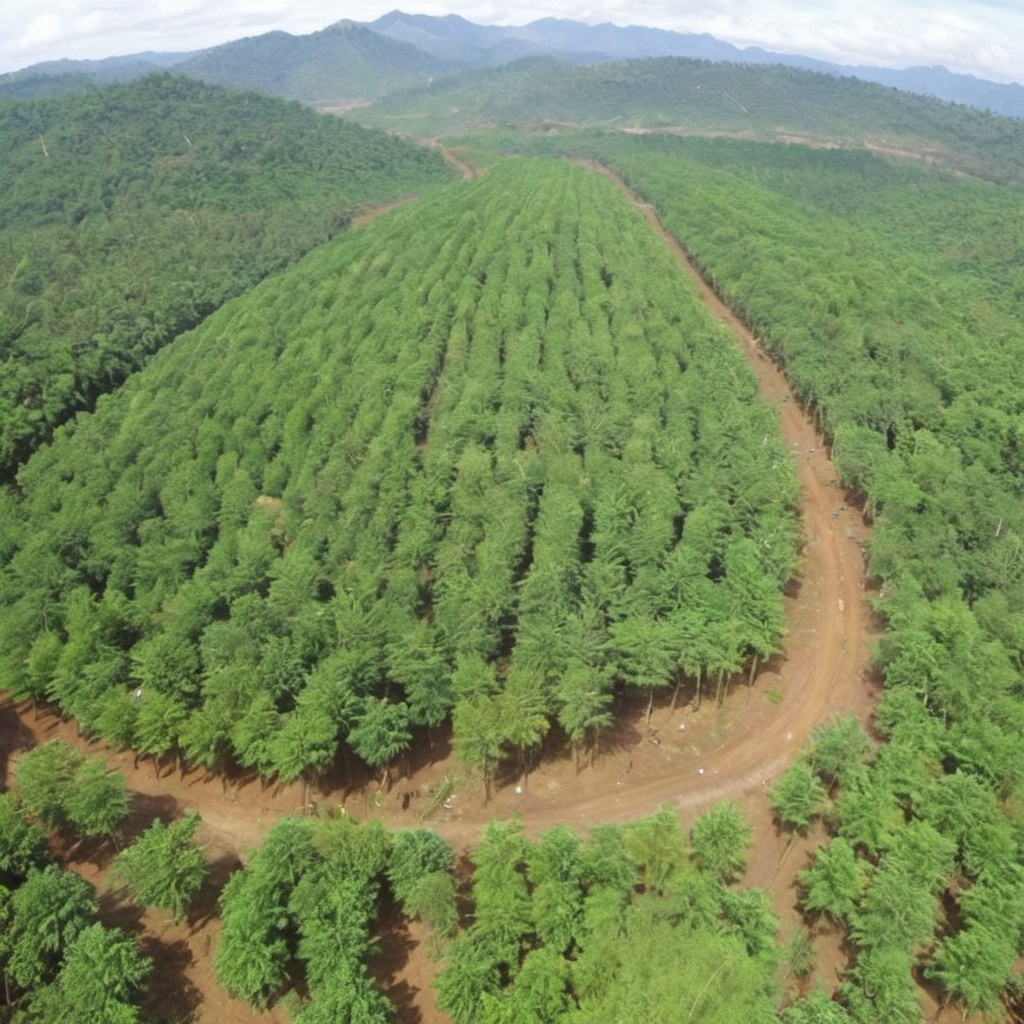
Carbon forestry projects, also known as reforestation or afforestation projects, involve the planting and management of trees to sequester atmospheric carbon dioxide (CO2) through photosynthesis. These projects aim to mitigate climate change by reducing greenhouse gas emissions.
How Carbon Forestry Projects Work:
- Tree Planting: Trees are planted on land that was previously degraded or not forested, such as former agricultural lands, urban areas, or barren hillsides.
- Growth and Maturity: The trees grow over time, absorbing CO2 from the atmosphere through photosynthesis and storing it in their biomass (trunks, branches, leaves) and soil organic matter.
- Carbon Sequestration: As the trees mature, they sequester more carbon than is released during growth, maintenance, or harvesting.
- Monitoring and Verification: Carbon stocks are monitored and verified through regular inventories of tree density, diameter at breast height (DBH), and biomass.
Benefits of Carbon Forestry Projects:
- Climate Change Mitigation: By sequestering CO2 from the atmosphere, carbon forestry projects help reduce greenhouse gas emissions.
- Biodiversity Conservation: Reforestation can restore habitats for endangered species, promote ecosystem services like pollination and pest control, and enhance biodiversity.
- Soil Erosion Prevention: Tree roots hold soil in place, preventing erosion and landslides.
- Improved Water Quality: Trees absorb excess nutrients from water runoff, reducing pollution and improving aquatic ecosystems.
- Local Economic Benefits: Carbon forestry projects can create jobs, stimulate local economies through forest product sales (e.g., timber, non-timber forest products), and increase property values.
Types of Carbon Forestry Projects:
- Reforestation: Planting trees on land that was previously forested but has been degraded or cleared.
- Afforestation: Establishing new forests on lands not previously forested (e.g., former agricultural areas).
- Agroforestry: Integrating trees into existing agricultural landscapes to promote ecological interactions and synergies.
Challenges and Limitations:
- Land Availability: Sourcing suitable land for reforestation or afforestation can be challenging, particularly in densely populated regions.
- Tree Species Selection: Choosing tree species that are well-suited to local climate conditions, soil types, and pest/disease pressures is crucial for project success.
- Maintenance and Management: Regular maintenance (e.g., pruning, thinning) and management practices (e.g., monitoring, harvesting) can be time-consuming and costly.
Certification Schemes:
- Verified Carbon Standard (VCS): A widely recognized standard for carbon offset projects, including reforestation and afforestation.
- Gold Standard: An international certification scheme that ensures high-quality carbon reduction projects meet rigorous environmental and social standards.
Carbon forestry projects offer a promising solution to climate change mitigation while providing additional benefits like biodiversity conservation, improved water quality, and local economic development.

